

Demographic data offer an important tool for the development and evaluation of policies that shapes the overall development agenda of every community. Human resource development is the centre of development planning and management. This section of the report provides information on the population size and distribution of the municipal, sex ratio, age dependency, age-sex structure as well as the migratory pattern within the municipality. Population distribution by rural-urban residence is of focus on the analysis of the demographic characteristics of the Wenchi Municipal and their implications for the socio-economic development of the municipality.
Population Size and Distribution
The Municipal has a total population of 89,739 (2010 Population and Housing Census), representing 3.9 percent of the region’s total population of 2,310,983. The population of the Municipality consist of 50.9 percent females and 49.1 percent males. The Municipal has sex ratio of 96.5 males indicating female dominance over males for the total population.
This is one of the Municipalities in the country with more females than males. The 2010 Population and Housing Census also put the growth rate of Wenchi Municipality at 2.3% slightly lower than the national figure of 2.5% and at par with the regional growth rate of 2.3%. The growth rate has been projected to 2.4%. The table below is the projected figures of Wenchi Municipality from 2010-2021. The Table below shows the total population of the Municipality between 2000 and 2021.
The municipality is largely a rural population. Three (3) out of every five persons is likely to be residing in the rural areas. The total land area of the municipality is 1,296.60 square kilometres and with a population of 89,739 it gives a population density of 69.2 implying that for every one square kilometre about 69 persons can be found living there.
Sex ratio
The sex ratio for the Municipality is 96.5, implying that for every 100 females there are 96.5 males. As can be seen from Table 2.1, the sex ratio increases slightly from 102 for the age group 0-4 to 103.1, for the age group 5-9 and further increases to 106 for the age group 15-19. Between the ages 20-24 and 25-29 however, there is a sharp decline in the sex ratio from 106.7 to 78.7 with female substantially outnumber the males. The sex ratio (113.2) was recorded among the 55-59 age groups, where there are 113 males for every 100 females while the least was 51.8 for the age group 90-94.
Population Density
The population density of the Municipality is 69.2 persons per square kilometre of land which is far higher as compared to the regional figure of 58.4 persons per square kilometre and far lower national figure of 103.4 persons per square kilometre.
Population and Housing Census, GSS
Age Dependency
The age-dependency ratio is the ratio of persons in the ?dependent? ages (generally under age 15 and over age 64) to those in the “working population” (15-64 years). It is often used as an indicator of the economic burden on the working population. The table 2.1 also presents information on the age dependency situation of the Municipality. It could be observed that the Municipality has an age dependency ratio of 83.5.
Which is slightly higher than the regional age dependency ratio of 81.3. The age dependency ratio for males is higher (54.4) than that of females (53.62). It is important to note that the age-dependency ratio varies with respect to the locality of residence in the Municipality. The urban areas have lower age dependency ratio (74.4) as compared to the rural areas (89.3). The relatively lower age-dependency ratio 74.4 in the urban centres could be attributed to the migration of the youth.
Age and Sex Structure
Wenchi has a more active population as compared to the region. The age-sex structure of the Municipal is not different from what pertains at the regional and national levels. Whereas 55.5% of the municipality’s population is within the active age group (15-64), the region recorded 53% in 2010. Table 2.1 shows the population by age, sex and type of locality. It indicates a youth age structure with persons less than 15 years constituting more than a third of a population (40.4%).
More than half of the population can be found in the 15-64 year age group, with a small proportion (5.1%) older than 64 years. Males tend to dominate from 0-19 years whilst the reverse is true between age 20 to 39 for the females. With the exception of age group 40-44 and 55-59 the female population tends to dominate.
Perhaps, females tend to live longer than their males counterparts or males in the municipality tend to travel elsewhere for livelihood. Figure 2.1 shows the population pyramid of the Wenchi Municipality. It has a broad base which suggests higher number of children and relative a high birth rate. The pyramid narrows rapidly from the base, upwards, suggestions a low number of the aged which probably means a high death rate. The existing large labour force is an asset needs the requisite social services to position it to pursue the Municipality’s development agenda. The table below is a breakdown of the age and sex composition of the population of the municipality.
Population Pyramid
A population pyramid is a graphical representation of the age-sex composition of a population and its shape is influenced by the levels of fertility, mortality, migration and coverage and content errors such as digit preference and exaggeration of age. The broadness of the base is determined by the level of fertility, while the shape is determined by mortality and to some extent migration.
Figure 2.1 shows the population pyramid of the Wenchi Municipality. It has a broad base which suggests a higher number of children and relatively a high birth rate. The pyramind narrows rapidly from the base, upwards, suggesting a low number of the aged which probably means a high death rate.
This type of age structure has a built-in momentum for the growth of the country’s population. When the young population eventually reaches reproductive age, the result will be a high population growth rate for some years to come. However, if the socio-economic potentials of the youth are properly harnessed and directed, they could contribute significantly to development of the district and the nation as a whole.
Fertility
Fertility refers to the number of live birth women have. It is affected by many social, cultural, economic, health, and other environmental factors.
Table 2.2 shows reported total rates (TFRs), general fertility rate and crude birth rate of the various Municipal and Districts in the Brong Ahafo Region. The total fertility rate per women in Wenchi Municipality is 3.4 children if she able to pass through her child bearing years. This TFR of 3.4 is relatively lower than the regional rate of 3.58 percent.
It could further be noticed that the Municipality recorded a general fertility rate of 99.3 is lower than the regional general fertility rate (105.9). This implies that there are 99.3 births per 1,000 women in the preceding 12 months before to the Brong Ahafo Regional figure of 26.6.
Table 2.3 below indicates that 52.9 percent of female children were born to women aged 12-14 years compared with male born which are 47.1 percent in the municipality. This shows that out of the total number of children ever born, 47.1 percent were males as against 52.9 percent for females. The table further indicates that 53.3 male children ever born survived as against 46.7 percent of female children who survived.
Implications of the Demographic Characteristics to Development Planning
Analysis of the Municipal population size and structure indicate a relatively young population and higher fertility rate among women, which has the potential for further growth. The results have implications for the planning of social services, particularly education and health. It is therefore recommended that the integration of population variables into development planning should be given more priority.
Demographic characteristics show youthful (54.9% of the population) population structure which implies the need to build more schools and create employment for the growing population. Inadequate employment avenues have negative impact in the municipal as it is likely to increase crime rate and threaten security in the municipality.
Since the number of females in the municipality is higher, policies should be put in place to the females of school going age in school to prevent early marriages and child bearing. Family planning programmes and projects should be made easily accessible in the municipality.
Spatial Distribution
This section discusses the spatial organization of the settlement system in the municipality. It provides a summary of the socio-economic profile within a spatial context and further shows the type, number, destination of facilities and services and how these factors ultimately shape the hierarchy of settlements in the municipality.
Settlement Pattern
With a projected population of 105,354 in 2017, the Municipality has over ninety-five (95) settlements with the major communities concentrated in the urban and peri-urban areas such Wenchi, Nchiraa, Akrobi, Subinso No.2, Awisa, Nkonsia, Amponsakrom , Tromeso and Droboso, with many rural communities at the periphery of the Municipality.
There are two (2) urban communities (Wenchi and Nchiraa) which have 42.2% of the total population of the Municipality (2017 projected). This implies high concentration at the core of the Municipality which has effects on the provision and accessibility of basic infrastructure.
On the other hand, the dispersed nature of the rural communities with their small population size makes the equitable provision of infrastructural facilities difficult. Since most of them do not meet the required population threshold for the provision of some facilities.
Table 1.6 and figure 1.4 depicts the twenty (20) largest communities and spatial distribution for Wenchi Municipality respectively.
Labour Force and Dependency Ratio
The 2010 Population and Housing Census Report shows that about 74.0% of the population aged 15 years and older are economically active labour force, whilst the 52% are classified as inactive. Out of the percentage of the active labour force, over 33% are employed whilst the rest are unemployed. With the current population estimated to be 106,408 (2017 Projected) the economic dependency is having a negative impact on the local economic development. The effect of this is the breakdown of social cohesion and support for the family since the little income earned is not able to support nuclear family let alone the extended family.
Within the plan period therefore measures would be taken to arrest the problem of unemployment and underemployment and make the youth acquire employable skills and take farming as a serious vocation to better their lot.
Improving the economic advantages in the agricultural and service sectors will lead to improved income and raise the standard of living of the people. There are programmes currently going on in the Municipality such as the Youth Employment Programmes and Youth in Agricultural Programme, all aimed at creating jobs and earning income which would in the end reduce the dependency ratio. With the introduction of the exemption packages on the Health Insurance Scheme, for the aged and especially the School Feeding Programme in the educational sector and LEAP, the economic dependency rate in the rural communities where hard core poverty prevails would be reduced.
Migration (Emigration and Immigration)
The Municipality experiences both inter and intra migration. It relatively experiences mild migration from the rural communities to the urban communities. Migration has been crucial to the population growth of the Municipality. Immigration has been mainly been settler farmers from Northern Ghana who engage in farming activities in the smaller communities and villages in the Municipality.
Ewes and Fantes are also Immigrants found along the Yoyo River in the Municipality engaging in fishing activities. Traders, Civil Servants and Students, migrate also to the Municipality on seasonal basis due to their engagements.
Emigration has also been in the form of the economically active population leaving the Municipality to seek jobs, school, medical care among other reasons. About a quarter (25.3%) of the migrants have lived in the Municipality for 1-4 years whilst a fifth has stayed for 10-19years. More than a third of the population born elsewhere in the region is from the three northern regions with the Upper West contributing about 60 percent.
This may be attributed to the fertile nature of lands in the Municipality which supports agriculture cultivation and tends to attracts migrants from the north who are mostly farmers. More than a fifth of the migrants from the three northern regions have stayed between 10-19 years in the Municipality whiles just a little over 11 percent have lived for less than a year. There are also a total of 3.3 percent international migrants residing in the Municipality.
There has been a significant change in the migration pattern in the Municipality. Since the economy is still basically agrarian , the youth, who form the majority of the labour force, and are not interested in agriculture move to the cities of Kumasi, Accra and other regional capitals in search of non-existing jobs leaving the children and the aged in most of the communities.
Gender Equality
Gender issue has also been identified as one of the cross-cutting issues which affect the impediments to progress in the fight against gender discrimination. This includes lack of good quality data disaggregation by sex, the paucity of financial and technical resource for women’s programmes and lack of representation in the political sphere.
Promoting gender equality and empower women within the Plan period (2018-2021), the Municipal Assembly would vigorously pursue programmes such as economic empowerment in the agriculture sector and commercial sector through credit facilities for women farmers and traders, sensitization of women on domestic violence bill, disability bills and its implementation and encouraging women to accept public offices in the local government structures.
These would in the long run help the Assembly to achieve the SDGs. More girl-child enrolment in the second cycle schools would be pursued for them to serve as role models in the municipality. Again equal access would be given on credit facilities, technology, markets and information to make inform decision making. Further to this, basic social and economic infrastructure should be shared equally. Access to facilities such as education, health, water and sanitation facilities should be provided for all. These would have implications for service delivery.
Rural-Urban Split
The rural-urban dichotomy continues to be in favour of the rural communities but at a decreasing pace as a lot of the youth are moving from the rural communities to the few urban centers in the Municipality to pursue education, search for jobs and enjoy other social amenities. The population of the Municipality is largely rural as 59.5% (67,789) lives in rural settlements while 40.5% (46,230) is urban. In Ghana, settlements with population over 5000 are considered urban, among other criteria. By population criteria only, Wenchi town and Nchiraa would be classified as urban communities. Other major settlements are Akrobi, Subinso No.2, Nkonsia, Tromeso, Beposo, Droboso, Awisa, Nwoase, Amponsakrom, Koase and Buoku.
Even though only Wenchi and Nkyiraa are urban communities in the Municipality by population criteria, there are indications to show that Subinso No.2 and Tromeso shall attain urban status by 2021. It is therefore important to put the preparation and updating of town layouts for these communities in order to prevent the unusual haphazard development that characterized urban settlement in Ghana. Table 1.10 shows the Rural –Urban Split in the Municipality.
Table: Rural-Urban Split
Settlement system
This section discusses the spatial organization of the settlement system in the municipality. It provides a summary of the socio-economic profile within a spatial context and further shows the type, number, destination of facilities and services and how these factors ultimately shape the hierarchy of settlements in the municipality. The approach uses a combination of methods to determine the spatial pattern or system of the municipal development are:
1. Surface Accessibility Analysis
2. Scalogram Analysis
Distribution of services and infrastructure
A look at the location and distribution of health, education, road network and water and sanitation facilities clearly shows that majority of them can be found in the urban areas to the detriment of the rural population which 63.3 percent of the entire population. Wenchi, the Municipal capital for instance is enjoying majority of the good services and infrastructure distribution in the Municipality. However, the Assembly is working serious to reverse or bridge the gap between these two localities. From 2014 to 2017, massive investment in the education, health, roads and water and sanitation facilities centred on rural communities. Among the beneficiaries were Ayigbe, Asuofiri, Congo, Ahwene, Buoku, Amoakrom, Nyinyanponase, Subinso No. II, Awisa, Amponsakrom, Nkyiraa and Botensu. This strategy needs to be pursued as the rural population served as the food basket and contribute significantly to the entire development of the Municipality.
Human Settlement Pattern and Hierarchy of Settlements
Human settlements of varying sizes and performing various functions are located in various sections of the Municipality. Wenchi is the only first order settlement in the Municipality. There is however no second order settlement, indicating the concentration of people (41.4%) and functions in the Capital.
There are two (2) third (3rd) order settlements namely Subinso No. 2 and Nchiraa, whereas there are five (5) fourth (4th) order settlements namely Koase, Awisa, Nwoase, Droboso, and Tromeso.
A careful look at the hierarchy of settlements in the Municipality shows a pattern where the high order settlements are located along the Trunk roads in the Municipality. Of the third and fourth order settlements, only Nchiraa is not located along a major trunk road. A possible explanation for this pattern could be the virtual absence of Social Services like water, education, health and electricity in the communities that are not located along any of the trunk roads in the Municipality, forcing people to move to settlements that are relatively better endowed.
The pattern also reveals a situation where settlements that do not lie along any of the trunk roads are linked by very poor feeder roads. Taking into consideration the fact that these settlements are predominantly agrarian, the existing pattern and road network makes movement of goods between farm gates and market centres extremely difficult and expensive.
Wenchi, the Municipal capital and the only first order settlement in the Municipality is geographically located in the middle of the municipality and is also the merging point for all the trunk roads passing through the Municipality. This makes physical accessibility to the capital easier especially for communities along or close to any of the trunk roads.
Figure 7 below is also a graphical presentation of the order of settlements in the Municipality
Date Created : 11/21/2017 4:16:43 AM

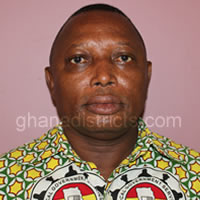


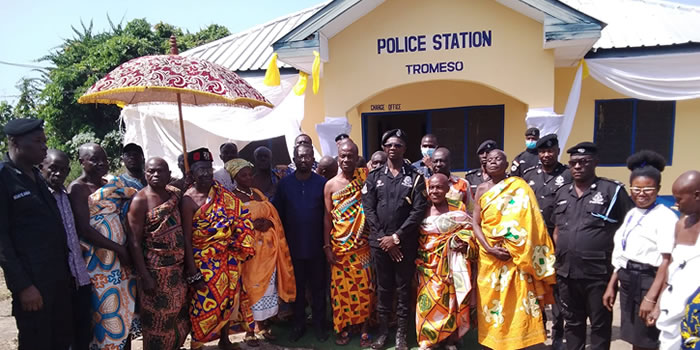
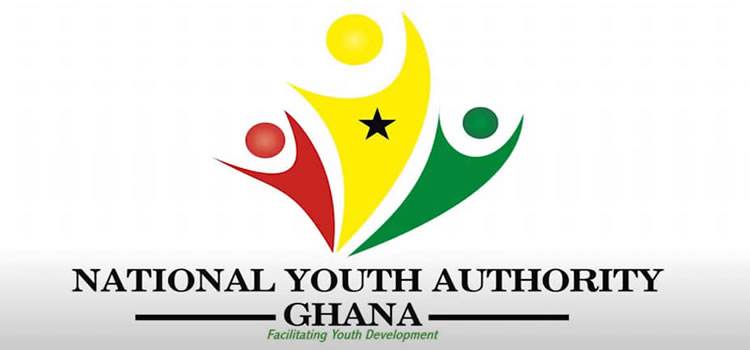
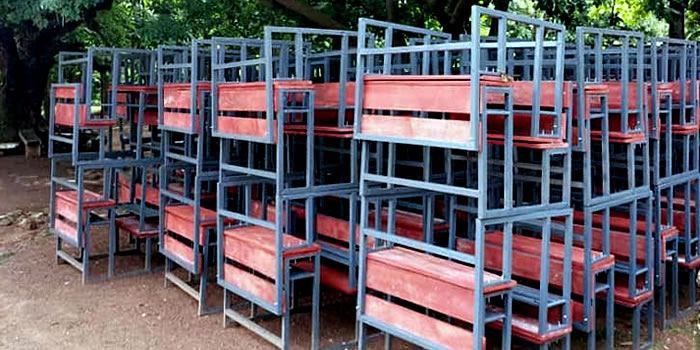
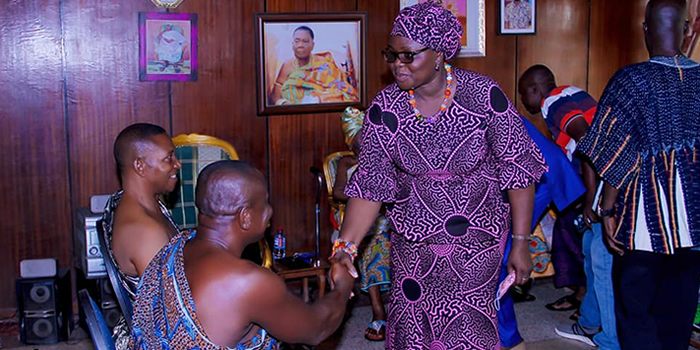
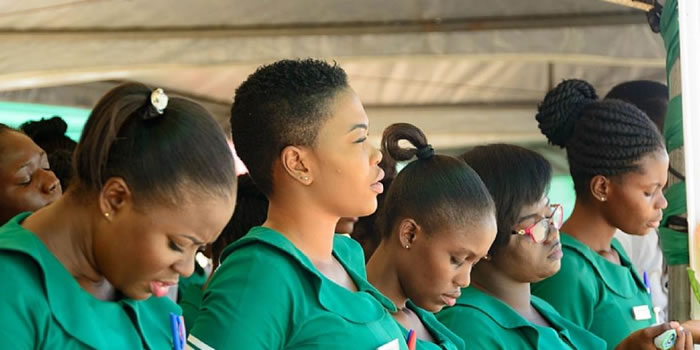




 facebook
facebook
 twitter
twitter
 Youtube
Youtube
 +233 593 831 280
+233 593 831 280 0800 430 430
0800 430 430 GPS: GE-231-4383
GPS: GE-231-4383 info@ghanadistricts.com
info@ghanadistricts.com Box GP1044, Accra, Ghana
Box GP1044, Accra, Ghana